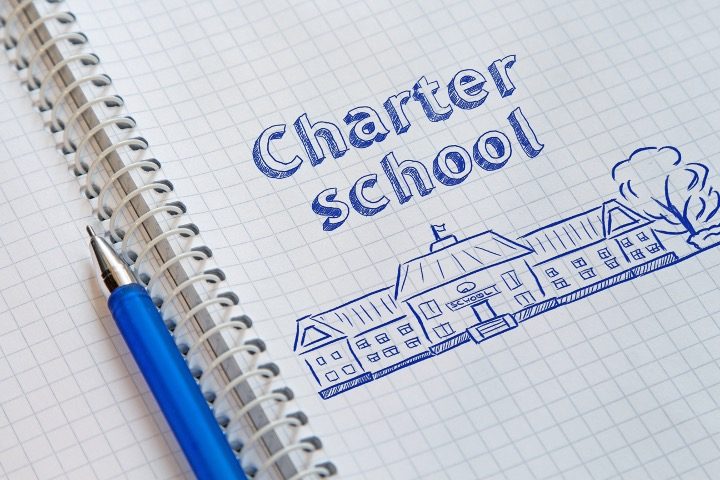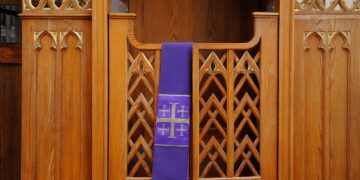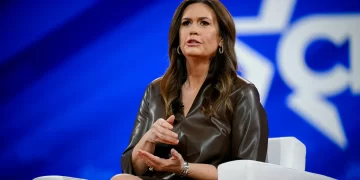
Parents who think they’re saving their children from “woke” educators by sending them to charter schools rather than traditional public schools may have another thing coming. According to a new Heritage Foundation study, “charter schools actually tend to be more woke than traditional district schools.” (Emphasis in original.)
The authors of the study, Jay Greene and Jason Bedrick of Heritage’s Center for Education Policy and Ian Kingsbury of the Education Freedom Institute, compared the wokeness of charter schools to that of neighboring public schools by tallying the occurrences of certain keywords in the schools’ parent-student handbooks. Specifically, they searched for “diversity,” “equity,” “inclusion,” “justice,” “restorative,” “social-emotional learning,” “gender identity,” and “culturally affirming/relevant.”
Regular readers of The New American will be familiar with most of these terms. The first three, of course, comprise the infamous DEI trio and, along with “justice,” usually mean the opposite of their traditional definitions when employed by the Left. “Restorative” may be the most unfamiliar. In this context, it refers to “restorative discipline,” which Greene, et al., describe as “an approach to student misbehavior that entails talk therapy instead of consequences” and “often means no discipline at all.”
The authors found:
Among the 211 charter-district handbook pairings in this sample, the combined usage of the eight keywords was higher in charter schools than district schools in 122 of 211 cases, or 58 percent. In 68 cases (32 percent) the keywords were used more in the district school, while in 21 cases (10 percent) there was a tie, which occurs most often when zero keywords are observed. Overall, for every one district school that deploys the keywords more often than the comparison charter school, there are nearly two cases in which the opposite is true.
Certain keywords, such as “social-emotional” and “culturally affirming/relevant,” appear much more frequently in charter schools’ handbooks than in neighboring public schools’, while the difference in frequency for others is not nearly as stark. “Overall, however, the fact that each keyword appears more often in charter handbooks than district handbooks amounts to a strong and clear signal that most charter schools are more progressive in their politics and values than nearby district schools,” wrote the authors.
Why, one might ask, should that be the case? Greene and company reflect on the matter:
Given that markets tend to reflect the preferences of consumers and that most parents prioritize the teaching of values and want schools that eschew “woke” values, one might expect that the charter school sector would be primarily comprised of schools with more traditional values with only a minority catering to the segment of the public that wants woke schools. Indeed, since traditional district schools have lurched to the left, one might expect that alternatives to the government-run schools [would] be even more conservative.
But that may not be the case. Highly regulated and constrained markets are not as effective as freer markers at giving consumers what they want. Given the constrained choice between an academically ineffective district school that reflects the woke values of politicians and special interests and an academically effective charter school that reflects the woke values of charter authorizers and philanthropies, parents will often prefer the latter even if the school does not reflect their values.
One of the biggest drivers of charter-school wokeism is the National Association of Charter School Authorizers (NACSA), which, according to the report, “‘sets the ground rules’ for how authorizers (the entities entrusted with deciding when new charters should open or existing ones should close) should determine which petitions for new charter schools are approved and when charters should be revoked (i.e., when charters should be shut down).” NACSA supports strict regulation of charter schools, which helps to block competition, and is a huge proponent of the DEI agenda, encouraging authorizers to adopt DEI practices and pushing for them to become part of charter authorization.
“‘School choice for school choice’s sake’ is completely misguided…social justice and equity are the GOAL not some political tactic,” NACSA director of strategic partnerships Jason Zwara posted on X.
Even states that have legislated against DEI in schools still refer authorizers to NACSA. “Meanwhile,” reads the Heritage study, “although NACSA deleted their membership list soon after it was revealed that they were inflating their membership, it appears that many authorizers in red states continue to be affiliated with NACSA.”
The other major contributor to charter schools’ leftism is the foundations that fund them, most of which are committed to the woke agenda. Among the largest charter-school donors are the Walton Family Foundation (WFF), the Bill & Melinda Gates Foundation, and the NewSchools Venture Fund, all of which are intent on infusing DEI into charter schools. “The WFF,” noted Heritage, “has even sponsored drag shows for children.”
Greene and his co-authors offer several recommendations for “de-wokifying” charter schools, including defunding NACSA at the state and federal level and removing it from the authorization process, having multiple charter-school authorizers per state, granting charters for longer time periods, and expanding education savings accounts.
While these would certainly improve the chances that charter schools provide a more conservative alternative to regular public schools, the fact remains that they are government-funded institutions ultimately answerable not to their students’ parents but to politicians and bureaucrats, who often are heavily influenced by left-wing activists and faddish educational theories. As always, the best solution to the woes of American education is to separate school and state.


































 Reaction & Commentary
Reaction & Commentary

















